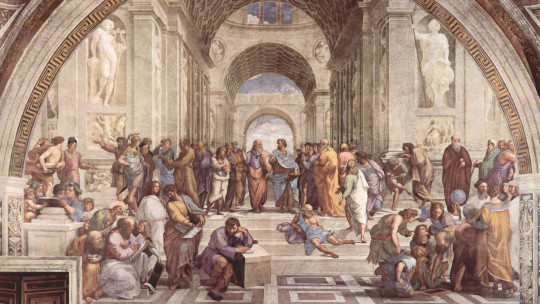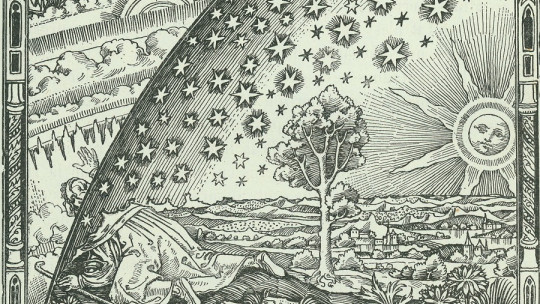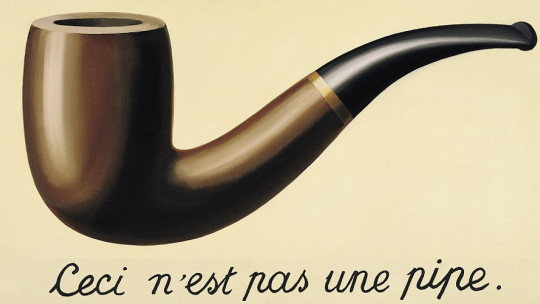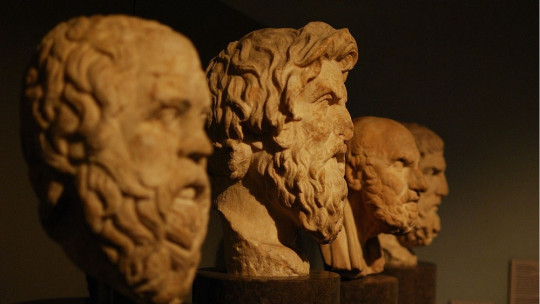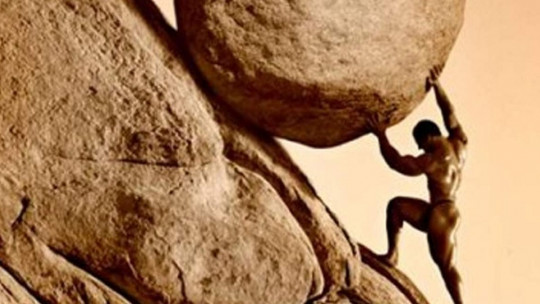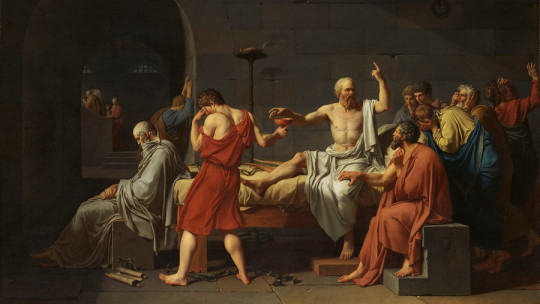The word myth It is frequent in our current vocabulary. We talk about a myth when we refer to something that is not true, or for which there is no evidence to verify it. Probably, we are not so clear about the concept logos. Could it have something to do with logic? Do you mean then that the difference between myth and logos lies in the fact that the first cannot be demonstrated, while the second can?
Well yes, and no. The differences between myth and logos They are not so clear, as we will see below. Furthermore, both concepts share a series of common characteristics. Let’s get a little closer to each of them to better understand their meaning and differences.
What are myth and logos?
The word myth comes from the Indo-European root meudh either mudhwhich means something like telling For its part, the Greek word that evolves from this word is mythoswhich also means word, story. Both concepts give us a series of clues about what a myth is and what its function was originally.
For the Greeks, myth was not a false or non-existent fact. That is the current meaning of the word. In Ancient Greece, a myth was an explanation of the world; It was related to the origin of the cosmos, of humanity, and gave meaning to the mysteries of existence. All archaic cultures, without exception, have a culture more or less rich in myths, generally related not only to the origin of the world, but also to that of their own community. Thus, the myth not only provides answers to general questions, but also gives meaning to the existence of human beings and their role on earth.
In conclusion, we can define myth as a timeless story, located in an imprecise place and time, that tries to give meaning to something in the present, whether it is a phenomenon, a fact, or a community. The myth lacks logic and uses fantasy to develop its explanations.
The word logos comes from the Greek verb legeinwhose meaning can be equated to various verbs: collect, count, enumerate In the etymology of the word we see clearly the idea of experience and reasoning; collect (collect empirical evidence), count (which is related to judgment, reflection), and enumerate (put in order a series of concepts). Thus, we can define logos like the reasoned word, that is, not just any speech, but measured and argued.
The main difference that separates the logos of the myth: while this is, as we have already pointed out, a story, a fiction, the logos It is a reasoning, a judgment, a conclusion based on a series of inquiries or reflections.
What are the points of union between myth and logos?
Despite this, we also find points in common between both concepts, as we will see below.
1. Myth and logos are the exclusive heritage of human beings
Both concepts are human. This is the characteristic that both myth and myth share. logos: Both are exclusive expressions of humanity ; the myth related to the imagination, and the logoswith reasoning.
In her book A Brief History of Myth, Karen Armstrong argues that mythology is not only typical of the Homo sapiens, our current human species, but the Neanderthals had already created a series of myths to explain the mysteries of life and death. According to this author, the discovery of a series of ritual evidence in Neanderthal tombs attests that these first human groups They had already designed a series of explanations to make sense of death
Therefore, we can affirm without any doubt that both myth and logos They are the exclusive heritage of human beings.
2. Myth and logos they have a common goal
There is another common characteristic, and it is none other than their objective, their goal. Both the myth and the logos They want to interpret, they want to give meaning to the world around us. Myth helps human beings understand their place on earth, in the cosmos, in creation , and proposes solutions about life and death that, in general, cannot be found through simple logic. For his part, the logosmore linked to reflection and empirical experience, in turn tries to unravel these mysteries through observation and reasoning.
The differences between myth and logos
We are going to specify a little more what the differences are between both concepts so that they are clearer.
1. Myth uses fantasy, logosthe reasoning
Myth uses fantasy and imagination to explain the world They are fantastic stories, which compile legends and stories passed down from generation to generation. On the other hand the logos Its main vehicle is logic and reasoning.
2. The myth is transmitted from generation to generation; he logos It is an individual experience
The myth is the heritage of the culture of a community and, as such, is passed down from generation to generation It is part of their folklore and their roots. On the other hand, what is obtained through logos is constantly verified. Being the product of reasoning, it is not enough that a concept has been transmitted from parents to children. The person who receives it must verify for himself that the content is true, and to do so he uses his own thinking and his own logic. In general, everything warned through the logos It is the result of experimentation and an individual reasoning process, not of a tradition of ancestors.
3. The myth is not questioned, the logos Yeah
In fact, and as we have already commented in the previous point, he logos is in a constant process of questioning Not the myth; The myth is the heritage of the ancestors, it is part of the culture of the community, it is a truth accepted by everyone. Nobody questions the veracity of the myth.
4. The myth uses symbolic language; he logosNo
The myth uses highly symbolic language to transmit its teachings When dealing with concepts that are beyond human reasoning (death, divinity, the ideal of justice…), its language must be built on a symbolic basis; Otherwise, it is impossible to convey the concepts that the myth aims to communicate. We have constantly observed this in the history of humanity. Even now we still do it: when we try to explain the consequences of an act, when we establish a moral, we often use a fable or a story. When we do this, we are using the myth.
The origin of the myth and the logos
As we have already pointed out above, the myth is as old as humanity. All human communities have developed a mythology to explain their existence and that of the world, and to provide answers to a series of mysteries that they could not understand (such as, for example, death).
For his part, the logos as a way to access these answers is much more recent, and Experts agree on placing the birth of the logos in Ancient Greece ; specifically, with the so-called pre-Socratic philosophers. Let’s look a little more closely at what this process was.
The great monarchies and their great myths
The great ancient mythologies are closely related to eastern monarchies, such as Babylon, Persia or Egypt. They are the calls real ideologiesand they all have in common placing the figure of the king, the sovereign, as the axis around which the entire cosmogony revolves.
Indeed, These cultures conceive the universe as a cycle of chaos/order/chaos that never has an end Chaos follows order, just as order follows chaos, and so on forever. The king is, therefore, the sacred figure whose mission is to guarantee this order; Therefore, in cultures such as the Babylonian or the Egyptian, each end of the year, when chaos returned to the world, the sovereign had to go through a series of rituals that guaranteed the return to that order that he himself symbolized.
Why do we explain all this? Because only by understanding this can we understand why, in a place in the Mediterranean, they broke with the path of myth and began to follow that of the logos to explain the world. We see it below.
Greece and the logos
Like all ancient cultures, the people who settled in what is now Greece also had their own mythology. Already in classical times, authors such as Homer or Hesiod compiled all this mythological wealth and left us in writing the adventures of Zeus, Hercules or Athena.
The Mycenaean culture, which lived in continental Greece before the arrival of the Dorians, was a monarchy that largely followed the eastern models of mythology, what we have called, following Miguel Morey, real ideologies. Well, with the arrival of the Dorians, Greece plunged into a dark period (which experts call, precisely, the Dark Ages) about which almost no information has remained, since writing completely disappeared. It was not until the 6th century BC that the Hellenic territory began to re-emerge, but its reality was already very different.
These social changes that arose with the renaissance of Greece have a lot to do, according to some authors, with the passage from myth to logosthat is to say, the passage from a mythological conception of reality to an understanding based on reasoning To begin with, the reborn Greece, despite obviously having a religion, lacks strong priestly castes like those of Egypt. Second, the recovery of writing means that the texts, when fixed, can be analyzed and compared and, therefore, are more susceptible to being discussed (something that, in the oral mythological tradition, this was not possible). And finally, we find the birth of the polis or city states, whose structure is very different from the cities of the eastern monarchies, in which the entire city revolved around the sacred palace where the monarch lived.
He logos It starts with the pre-Socratics
Ionia, in Anatolia (Asian Greece) and, specifically, the city of Miletus, constituted at the time we are referring to a true crossroads. A philosophical school was born there (the School of Miletus) of which they would be part philosophers of the stature of Thales of Miletus, Anaximander or Anaximenes , included in the very generic group of the pre-Socratics (before Socrates). This group of philosophers will be the first to try to understand the world through discernment. The pre-Socratics will try to find what is common and permanent in matter, and they will affirm that reality is made up of very few elements. Thales, for example, maintained that “water is the beginning of all things.”
Nowadays it may seem like a somewhat crude reasoning, but it is important to realize the step involved in going beyond the myth and trying to delve into the reality of matter and life. Thales no longer presupposes the creation of the world at the hands of a god, but rather establishes a real, tangible element (water) as its origin. This is why the work of the pre-Socratics is crucial in the passage from myth to logos and, therefore, in our modern world, heir to this logos.
Validity of myth and logos currently
Currently, the myth tends to be considered little more than a children’s story. Furthermore, the degree of “evolution” of a culture is measured based on its mythological beliefs. In our world, everything that moves away from logosthat is, of reasoning and observation, It is absurd, incoherent and even synonymous with ignorance However, as always, not everything is black or white.
We cannot forget that figures like Freud and Jung relied on myth to understand human beings; And, in truth, myth is much more than a story: it is a reflection of the human psyche. The role that the so-called collective unconscious has had in the creation of myths is becoming increasingly clear; Therefore, they are crucial to understanding human nature and behavior.
Indeed, the myth is much more than a mere fairy tale. As Hans-Georg Gadamer argues in Myth and reason, The myth is the bearer of its own truth, unattainable for the rational explanation of the world In other words: myth reaches where reason cannot. Furthermore, human beings understand based on symbols, fables. Concepts are difficult to understand if they are not illustrated with examples. Thus, even Plato himself used myth to explain his theories: famous are the cave myth and the Myth of the winged chariotkeys to his philosophy.
In conclusion, we can say that myth and logosDespite their differences, they actually complement each other and that they probably couldn’t go very far without each other.

